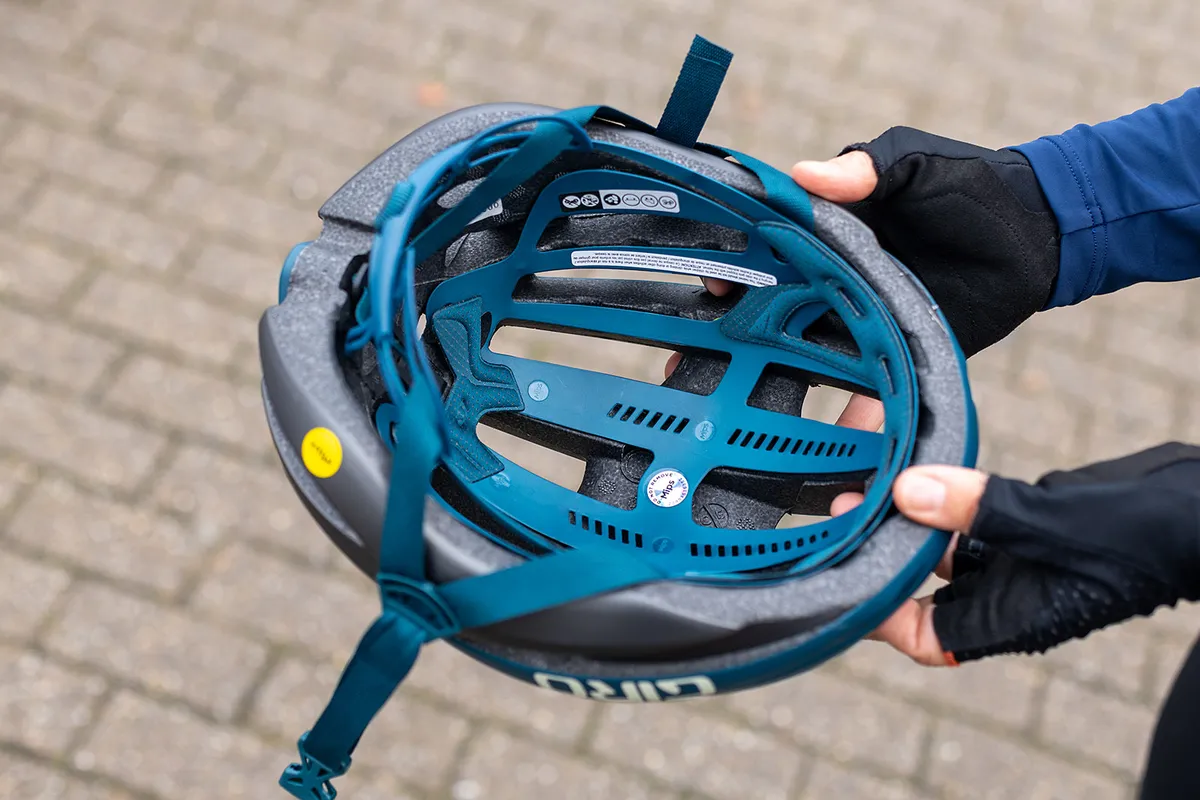The original Giro Synthe was launched in 2014 and quickly became a celebrated addition to the then-fledgling aero road helmet genre, with our reviewer labelling it as "aero, airy, light and comfy".
The sequel took seven years to arrive, and in that time MIPS has become fully established as the industry’s foremost internal safety tech, while practically every brand has an aero helmet in its arsenal.
So will the new Synthe MIPS II find similar acclaim as the original, or has it been superseded by its rivals?
Giro Synthe MIPS II details and specifications

MIPS is present and correct in the Synthe II, albeit as a cheaper version that’s been overtaken by the Spherical MIPS tech deployed on Giro’s top-end lids, the Aries Spherical and Eclipse Spherical.
That cheaper MIPS and a less exhaustive aero focus nudges the Synthe II’s price to lower than £200, which is cheaper than the original but still a sizeable outlay.
You get lightweight but effective Ionic+ antimicrobial padding, which manages to provide internal comfort and sweat-mopping qualities despite its minimalist appearance.
That lean padding also makes it incredibly swift to dry.
Giro Synthe MIPS II performance

The Roc Loc 5 Air MIPS retention system is one of the Synthe II’s most impressive elements, producing a secure fit throughout my season of testing.
The retention dial is well-sized and gives a reassuring click when tightening, while the setup cradles the rear and sides of the skull reassuringly.
The MIPS plate is nearly fully integrated, with the rotation potential clearly evident. It smartly matches the outer colour scheme of my Matte Harbor Blue option (eight colours are available).
The above contributes to the helmet’s 5-star rating in the influential Virginia Tech Helmet Rating system.

Four vertical sizing options are offered, and the mechanism is easier than most helmets to adjust.
The lean webbed straps stayed irritation-free on big rides, sitting neatly beneath the ears and flush to the skin, and also proved easy to adjust.
The resolute buckle adds to the impressive functionality, but a chin pad would’ve been welcomed.
Surprisingly for its price, the outer liner doesn’t cover all of the exposed expanded polystyrene (EPS) foam around the rim, which is something I’d want to see from both durability and aesthetic perspectives.
That polycarbonate shell is neatly applied elsewhere, however, and blends smartly into the foam beneath it. The duo of eyewear tabs on either side are welcome.
The Synthe II’s overall weight comes in at 273g (M) on our scales, which is acceptable enough for the price point, but there are lighter helmets for less money available (see the MET Vinci and Scott ARX for two examples).
That weight didn’t feel cumbersome on the array of rides I subjected it to, however.

The 19 ventilation channels (including a big rear port) proved effective during the UK’s late-summer heatwave, the versatility extending to gravel riding and commuting.
My Matte Harbor Blue is a great-looking helmet out of the box, but I found it less so once on my head.
Although no wider than most road bike helmets (21.5cm from outer edge to edge on my medium), the low profile made it feel as though it was protruding too far width-ways, giving a slightly bulbous and shallow appearance.
Synthe MIPS II bottom line

Airy and comfortable, the Synthe MIPS II is a genuinely good helmet.
Where it struggles is in comparison to the helmets above and below it in the American brand’s hierarchy.
If you want a wind-tunnel honed, WorldTour-gracing, top-draw MIPS lid, then saving up for the aero Eclipse Spherical MIPS (£239.99) is my recommendation.
Want to save some cash but without seemingly losing the majority of the performance benefits? Enter the versatile Agilis MIPS (£99.99).
Both of these, plus a competitive market, mean the Synthe MIPS II is a helmet that may struggle to find its niche.
Product
| Brand | Giro |
| Price | A$360.00, €220.00, £190.00, $200.00 |
| Weight | 273g |
Features
| MIPS | yes |
| Helmet type | road |
| Features | Sizes: S, M, L Vents: 19 Colours: Matte Harbour Blue; Matte Black Underground; Matte Black/Bright Red; Matte White/Silver; Matte Portaro Grey/White/Red; Matte Black; Matte Black/Highlight Yellow |
